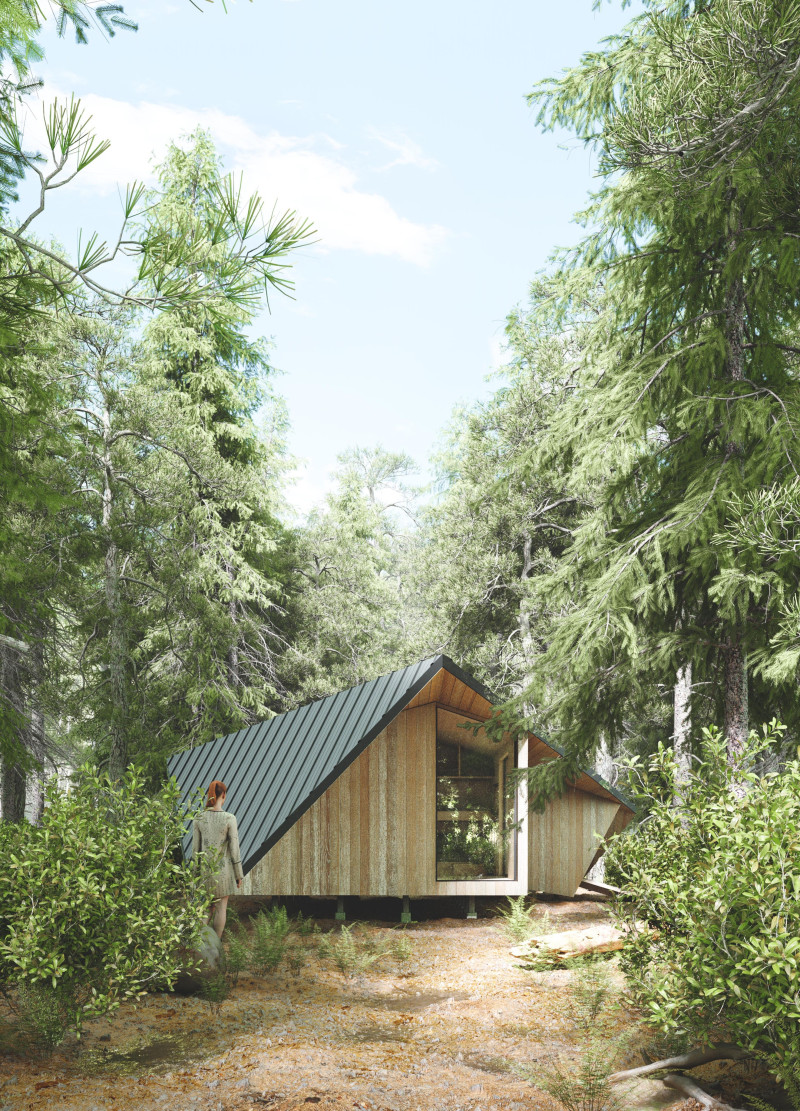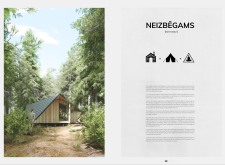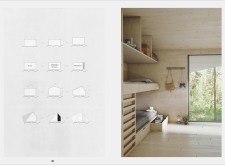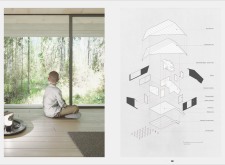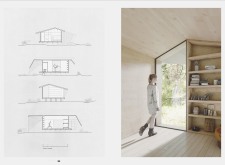5 key facts about this project
The design features a contemplative cabin located in a natural setting, intended to provide a quiet space for meditation and personal reflection. It disrupts the usual connection to the surrounding physical environment, allowing for a deeper experience of isolation and introspection. The overall concept combines elements of temporality and flexibility, creating a space that responds to its surroundings while serving the needs of its users effectively.
Design Concept
The cabin is designed as a temporary shelter, similar to a four-season tent. This characteristic allows it to be dismantled and reconfigured into reusable modules. Adapting to ecological principles, the design promotes a connection to the environment while ensuring a functional space for its occupants.
Materiality and Form
One notable element is the perforated and transparent exterior, composed of rigid elements that enable the entry of natural light and solar energy. This feature fosters a connection between the interior space and the outdoor landscape, giving it an open feel. Openings are carefully positioned to face south, east, and west, which optimizes light and temperature regulation, resulting in a comfortable interior.
Spatial Configuration
Inside the cabin, the layout prioritizes openness. A programmatic bar organizes areas for furniture and services while allowing 80% of the ground to remain open. This design choice helps create a calm atmosphere ideal for meditation. It eliminates unnecessary walls, offering a flow that encourages users to engage fully with the space.
Structural Integrity
The cabin’s roof is supported by cement anchors, which serve as the only points of contact with the ground. This design approach keeps the structural footprint minimal, enabling the natural landscape to stay mostly untouched. The lightweight nature of the cabin adds to its overall design philosophy, fostering integration with the environment while maintaining necessary stability for a temporary building.
The thoughtful relationship between the cabin’s form and its surroundings reflects a focus on creating a space that supports reflection and enhances connection with nature. Users are invited to appreciate their environment fully.


